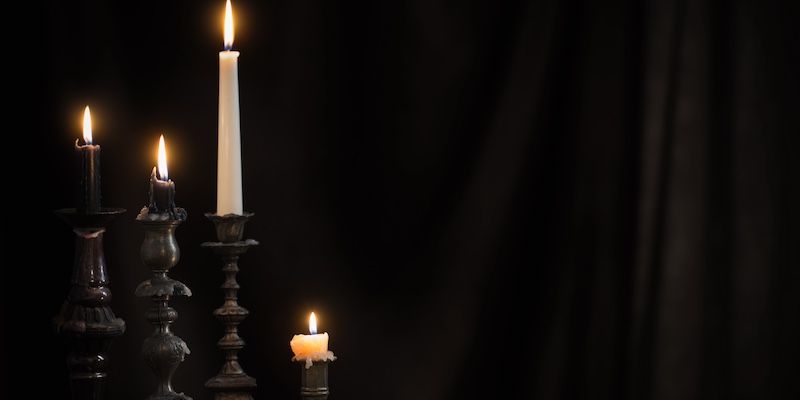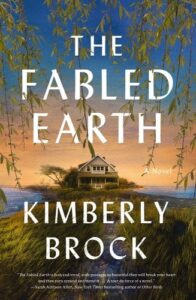There’s always been something about a story that’s set in a desolate and beautiful place, where the wind moans just right and the paint peels and there’s a sickly sweet scent that carries so much memory that it goes straight to your metaphorical head. At least that’s been true for me as a reader, and then later as a writer. I can’t say I remember the first time I became aware that there was a name for what’s created when these elements come together in this perfectly unsettling balance, but I imagine I heard it in a classroom, probably from a teacher with a glint in his or her eye, introducing the topic as a guilty pleasure, a secret indulgence, the kind of stories that might finally make glassy-eyed students lean in for once. Probably, just like Byron dared Shelley over 200 years ago on that claustrophobic summer holiday that birthed a genre, my teacher said, Now, let’s write a ghost story. And I find that my work is haunted by that challenge.
Gothic. What does it mean? The word has a shape to it that begs to be said aloud, just to feel it, soft, round, and suddenly spikey. See, there. The romance of it. The risk. The innate thrill and terror of what it is to be a creator. To live, knowing you must die. To love, knowing you must grieve. The absolute contradictions of being human, or not. It’s irresistible and maybe that’s why it was inevitable that I would nestle up to it as a storyteller whose work dwells so deeply in a complicated regional setting and wrestles with my conscience over long, bitter histories. But I can’t say it was intentional. Only that it was natural to find myself so comfortable with a form of literature that exists in a boundless hinterland. And after three published novels, I’m still trying to explain it to myself and define it for my readers. I make academic lists. I try to keep it simple. What will a reader find in a work of gothic fiction, then drill down further to American Gothic, and drawing closer to my own writing, Southern Gothic? Be on the watch for the presence of transgressive and irrational thoughts, impulses and desires, dark humor, grotesque characters and an overwhelming sense of alienation. On some level, all of these will be found. But trying to define gothic fiction can be difficult if you’re relying solely (rather than soulfully) on academic lists. Go ahead and try. See if it doesn’t end in an argument, always passionate, even if you’re only arguing with yourself, because it’s gothic, for heaven’s sakes.
So, let’s talk spirits. Ghosts? Oh, yes, but not always of the horror variety. Although, they might be. Take Emily Bronte’s Wuthering Heights with Heathcliff and Cathy, where even death can’t separate the lovers. Sure, it’s a bit of melodrama. In reality, people don’t actually unearth graves in their grief? Except when they do. Or the haunting might be more in line with Jess Kidd’s Himself, where the deceased maraud and murmur among the living like relatives that visit too late and too long. And what about monsters? Literally, no. Well, except when they are very real. Especially the ones we create, as in Toni Morrison’s Beloved or the sisters in Shirley Jackson’s We Have Always Lived in the Castle.
And speaking of castles, a gothic tale might be set against a classic haunted English manor as in Daphne du Maurier’s Rebecca, but it might just as likely be set on a coastal island in the Southern United States, as in Emily Carpenter’s The Weight of Lies. Does it make you uncomfortable, all this ambiguity? Now you’re getting it. And if I’m being honest, I’m not even sure that any of us really wants a resolution. Don’t we revel in being lost along the foggy roads, in the dark woods and winding mazes, eternally climbing stairways to nowhere, existing simultaneously in some kind of heaven and hell, as in Lauren Groff’s Florida? We don’t want the explanations to be black and white. We prefer the gray, where anything is possible, even forgiveness for the unthinkable. Even love where there is loss. Even life when death is a constant companion, as in Jesmyn Ward’s Salvage the Bones. We don’t want the answer, we want the angst of the question, the coming of the inevitable consequence. We want the raven’s maddening tapping at the chamber door and the terrible, lurking loneliness of Sarah Perry’s Melmoth.
What then, if gothic fiction may best be defined not by examples or expectations, but intimately, intuitively, for how it makes us feel—like we’re almost home, for better or worse? And because we suspect what’s waiting there.
Ranging and roving through my reading and writing life, again, I come back to the simplest of lines from Edgar Allen Poe’s poem, All that we see or seem is but a dream within a dream. The meaning brings a sense of bleak terror even as it reads like a line from a lullaby. And I find the best explanation for the gothic that I know: we are, all of us, finite creators who fear what we’ve wrought. Perhaps this is what it comes down to, why I’ll always write a haunted tale: when we set out to write a ghost story, when we try to define what that means, we aren’t attempting to do something exceptional, only human. For if we stop trying to break a gothic story down into its pieces and instead, appreciate the concept as a whole, we might find the proof in all the contradictions—that all stories are ghost stories.
***


















